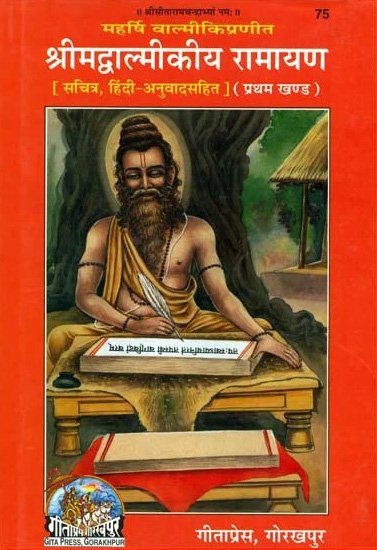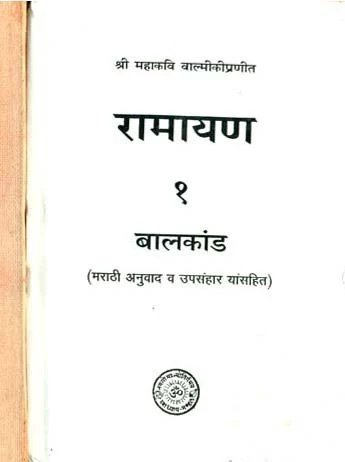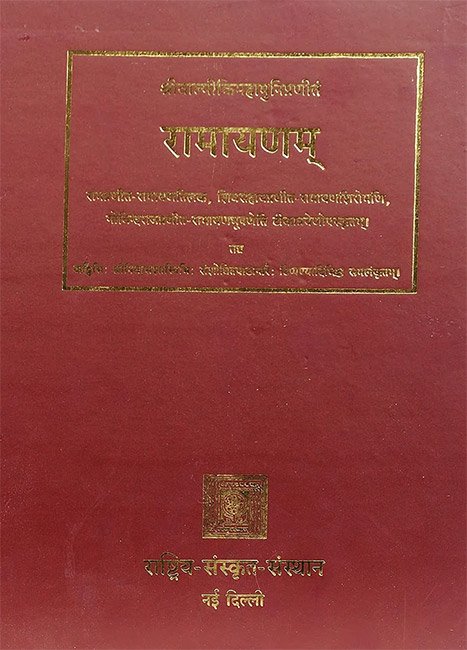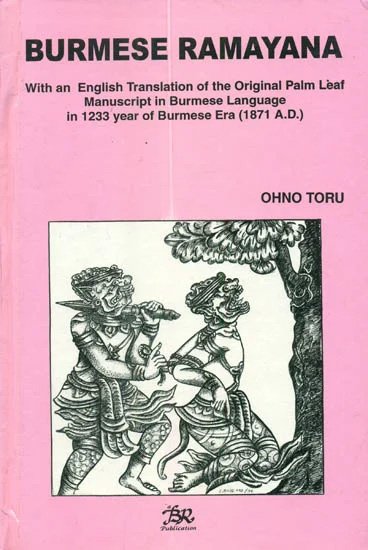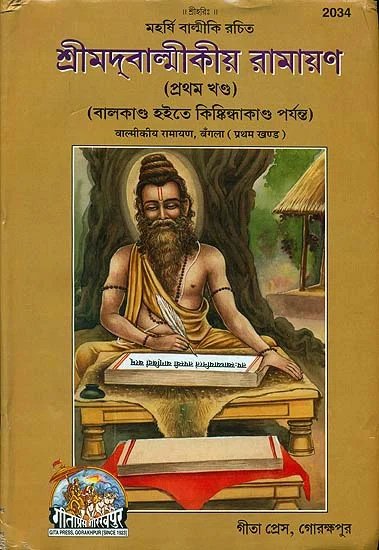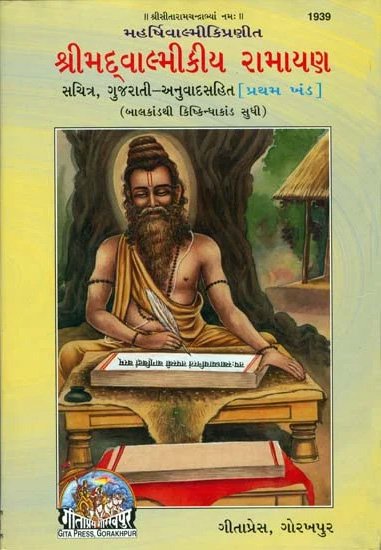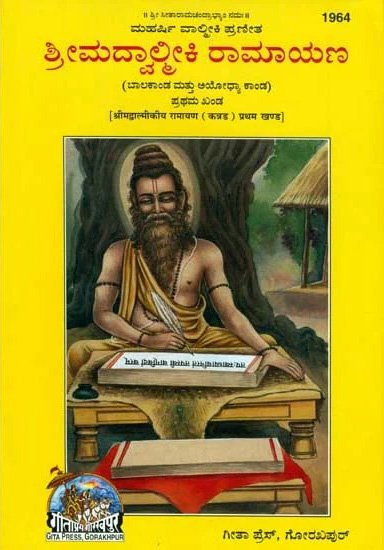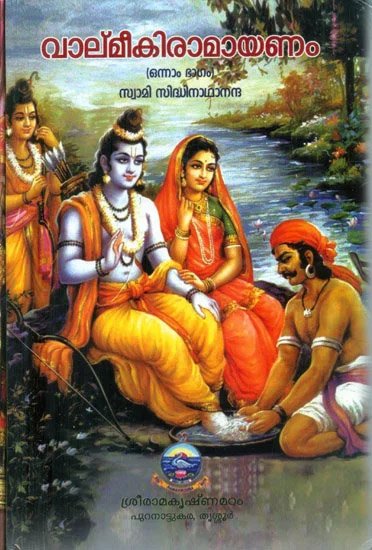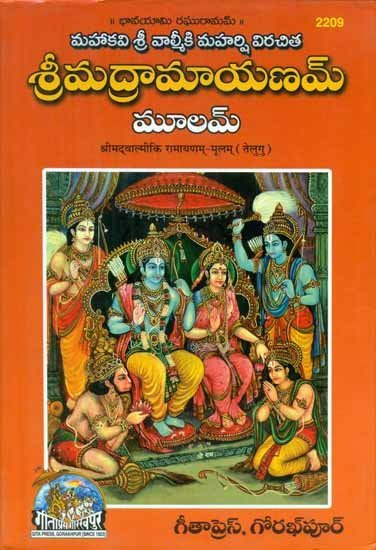Ramayana [sanskrit]
175,075 words | ISBN-10: 8129302500 | ISBN-13: 9788129302502
This Sanskrit edition of the Ramayana: An ancient epic revolving around the life and legends of Rama, Sita and Ravana. Original titles: Vālmīki Rāmāyaṇa (वाल्मीकि रामायण) or Vālmīkirāmāyaṇa (वाल्मीकिरामायण)
Verse 76.30
ततः समुत्थाय कुले कुले ते राजन्यवैश्या वृषलाश्च विप्राः ।
अयूयुजन्नुष्ट्ररथान् खरांश्च नागान् हयांश्चैव कुलप्रसूतान् ॥ ३० ॥
tataḥ samutthāya kule kule te rājanyavaiśyā vṛṣalāśca viprāḥ |
ayūyujannuṣṭrarathān kharāṃśca nāgān hayāṃścaiva kulaprasūtān || 30 ||
The English translation of Ramayana Verse 76.30 is contained in the book Valmiki-Ramayana by Gita Press, Gorakhpur. This book is not available online so in order to read the full text and translation you should buy the book:
Buy now! English translation by Gita Press, Gorakhpur (2011)
Glossary of Sanskrit terms
Note: This extracts Sanskrit terms and links to English definitions from the glossary, based on an experimental segmentation of verse (76.30). Some terms could be superfluous while some might not be mentioned. Click on the word to show English definitions.
Tatah, Tad, Tata, Samuttha, Kula, Kuli, Yushmad, Rajanya, Vaishya, Vrishala, Vipra, Khara, Naga, Haya, Kulaprasuta,
Analysis of Sanskrit grammar
Note: this is an experimental feature and only shows the first possible analysis of the Sanskrit text (Ramayana Verse 76.30). If the system was successful in segmenting the sentence, you will see of which words it is made up of, generally consisting of Nouns, Pronouns, Verbs, Participles and Indeclinables. Click on the link to show all possible derivations of the word.
- Line 1: “tataḥ samutthāya kule kule te rājanyavaiśyā vṛṣalāśca viprāḥ ”
- tataḥ -
-
tataḥ (indeclinable adverb)[indeclinable adverb]tataḥ (indeclinable correlative)[indeclinable correlative]tataḥ (indeclinable)[indeclinable]tad (noun, neuter)[ablative single], [ablative dual], [ablative plural]tata (noun, masculine)[nominative single]√tan -> tata (participle, masculine)[nominative single from √tan class 8 verb]sa (noun, masculine)[ablative single], [ablative dual], [ablative plural]sā (noun, feminine)[ablative single], [ablative dual], [ablative plural]
- samutthāya -
-
samuttha (noun, masculine)[dative single]samuttha (noun, neuter)[dative single]
- kule -
-
kula (noun, masculine)[locative single]kula (noun, neuter)[nominative dual], [vocative dual], [accusative dual], [locative single]kulā (noun, feminine)[nominative dual], [vocative single], [vocative dual], [accusative dual]kuli (noun, feminine)[vocative single]kuli (noun, masculine)[vocative single]
- kule -
-
kula (noun, masculine)[locative single]kula (noun, neuter)[nominative dual], [vocative dual], [accusative dual], [locative single]kulā (noun, feminine)[nominative dual], [vocative single], [vocative dual], [accusative dual]kuli (noun, feminine)[vocative single]kuli (noun, masculine)[vocative single]
- te -
-
ta (noun, masculine)[locative single]ta (noun, neuter)[nominative dual], [vocative dual], [accusative dual], [locative single]tā (noun, feminine)[nominative dual], [vocative single], [vocative dual], [accusative dual]tad (noun, neuter)[nominative dual], [accusative dual]sa (noun, masculine)[nominative plural]sā (noun, feminine)[nominative dual], [accusative dual]yuṣmad (pronoun, none)[dative single], [genitive single]
- rājanya -
-
rājanya (noun, masculine)[compound], [vocative single]rājanya (noun, neuter)[compound], [vocative single]
- vaiśyā* -
-
vaiśya (noun, masculine)[nominative plural], [vocative plural]vaiśyā (noun, feminine)[nominative plural], [vocative plural], [accusative plural]
- vṛṣalāś -
-
vṛṣala (noun, masculine)[nominative plural], [vocative plural]
- ca -
-
ca (indeclinable conjunction)[indeclinable conjunction]ca (noun, masculine)[compound], [vocative single]ca (noun, neuter)[compound], [vocative single]
- viprāḥ -
-
vipra (noun, masculine)[nominative plural], [vocative plural]viprā (noun, feminine)[nominative plural], [vocative plural], [accusative plural]
- Line 2: “ayūyujannuṣṭrarathān kharāṃśca nāgān hayāṃścaiva kulaprasūtān ”
- Cannot analyse ayūyujannuṣṭrarathān*kh
- kharāṃś -
-
khara (noun, masculine)[accusative plural]
- ca -
-
ca (indeclinable conjunction)[indeclinable conjunction]ca (noun, masculine)[compound], [vocative single]ca (noun, neuter)[compound], [vocative single]
- nāgān -
-
nāga (noun, masculine)[accusative plural]
- hayāṃś -
-
haya (noun, masculine)[accusative plural]
- cai -
-
ca (indeclinable conjunction)[indeclinable conjunction]ca (noun, masculine)[compound], [vocative single]ca (noun, neuter)[compound], [vocative single]cā (noun, feminine)[nominative single]
- aiva -
-
√i (verb class 2)[imperfect active first dual]
- kulaprasūtān -
-
kulaprasūta (noun, masculine)[accusative plural]
Other editions:
Also see the following editions of the Sanskrit text or (alternative) English translations of the Ramayana Verse 76.30
Ramayana of Valmiki (Hindi Translation)
by Gita Press, Gorakhpur (2011)
A Set of Two Volumes (Sanskrit Text with Hindi Translation)
Buy now!
Ramayana (Marathi Translation)
by Swadhyaya Mandal (Vedic Research Centre), Gujarat (1967)
Set of 10 Volumes
Buy now!
Valmiki Ramayanam (with Five Sanskrit Commentaries)
by Rashtriya Sanskrit Sansthan (2008)
Sanskrit only in Seven Volumes
Buy now!
Burmese Ramayana
by Ohno Toru [B.R. Publishing Corporation] (2000)
With an English Translation of The Original Palm Leaf Manuscript in Burmese Language in 1233 year of Burmese Era (1871 A.D.)
Buy now!
Srimad Valmikiya Ramayana in Bengali
by Gita Press, Gorakhpur (2015)
শ্রীমদ্বাল্মীকীয় রামায়ণ:
Buy now!Preview of verse 76.30 in Bengali sript:
ততঃ সমুত্থায কুলে কুলে তে রাজন্যবৈশ্যা বৃষলাশ্চ বিপ্রাঃ ।
অযূযুজন্নুষ্ট্ররথান্ খরাংশ্চ নাগান্ হযাংশ্চৈব কুলপ্রসূতান্ ॥ ৩০ ॥
Srimad Valmiki Ramayana in Gujarati
by Gita Press, Gorakhpur (2013)
શ્રીમદવાલ્મીકીય રામાયણ: [Set of 2 Volumes]
Buy now!Preview of verse 76.30 in Gujarati sript:
તતઃ સમુત્થાય કુલે કુલે તે રાજન્યવૈશ્યા વૃષલાશ્ચ વિપ્રાઃ ।
અયૂયુજન્નુષ્ટ્રરથાન્ ખરાંશ્ચ નાગાન્ હયાંશ્ચૈવ કુલપ્રસૂતાન્ ॥ ૩૦ ॥
The Ramayana of Valmiki in Kannada
by Gita Press, Gorakhpur (2018)
ಶ್ರೀ ಮದ್ವಲ್ಮಿಕಿ ರಾಮಾಯಣ: [Set of 3 Volumes]
Buy now!Preview of verse 76.30 in Kannada sript:
ತತಃ ಸಮುತ್ಥಾಯ ಕುಲೇ ಕುಲೇ ತೇ ರಾಜನ್ಯವೈಶ್ಯಾ ವೃಷಲಾಶ್ಚ ವಿಪ್ರಾಃ ।
ಅಯೂಯುಜನ್ನುಷ್ಟ್ರರಥಾನ್ ಖರಾಂಶ್ಚ ನಾಗಾನ್ ಹಯಾಂಶ್ಚೈವ ಕುಲಪ್ರಸೂತಾನ್ ॥ ೩೦ ॥
Srimad Valmiki Ramayanam and Srimad Bhagavad Gita - Malayalam
by Swami Siddhinathananda & Swami Ranganathananda [Ramakrishna Math, Thrissur] (2019)
രാമായണം: [Set of 3 Volumes]
Buy now!Preview of verse 76.30 in Malayalam sript:
തതഃ സമുത്ഥായ കുലേ കുലേ തേ രാജന്യവൈശ്യാ വൃഷലാശ്ച വിപ്രാഃ ।
അയൂയുജന്നുഷ്ട്രരഥാന് ഖരാംശ്ച നാഗാന് ഹയാംശ്ചൈവ കുലപ്രസൂതാന് ॥ ൩൦ ॥
Shrimad Valmiki Ramayana Mulam (Telugu)
by Gita Press, Gorakhpur (2019)
వాల్మీకీ రామాయణం [Set of 3 Volumes]
Buy now!Preview of verse 76.30 in Telugu sript:
తతః సముత్థాయ కులే కులే తే రాజన్యవైశ్యా వృషలాశ్చ విప్రాః ।
అయూయుజన్నుష్ట్రరథాన్ ఖరాంశ్చ నాగాన్ హయాంశ్చైవ కులప్రసూతాన్ ॥ ౩౦ ॥
![Ramayana [sanskrit] - book cover](/uploads/a/Ramayana-Sanskrit.jpg)
